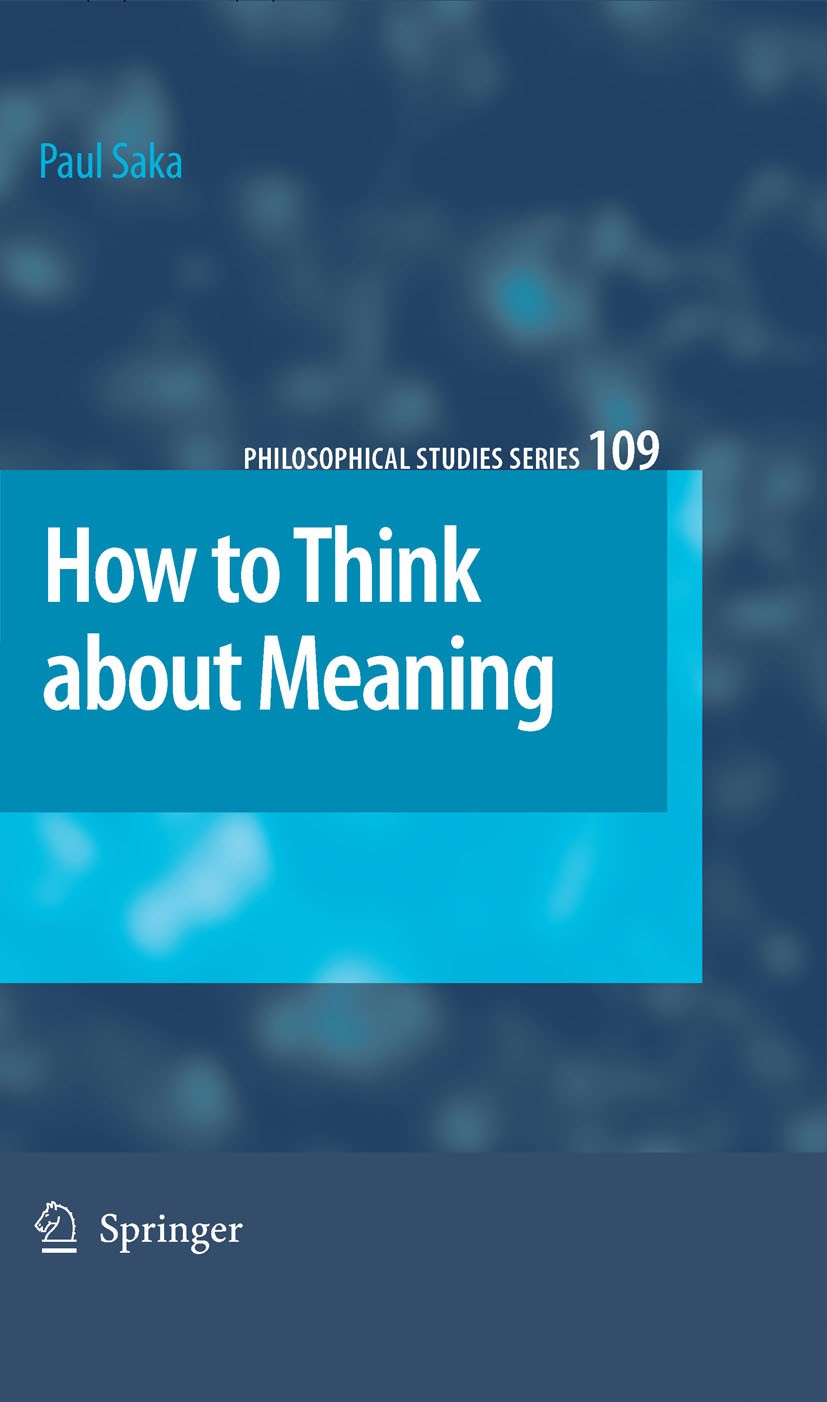| 书目名称 | How to Think about Meaning |
| 编辑 | Paul Saka |
| 视频video | http://file.papertrans.cn/429/428850/428850.mp4 |
| 概述 | Challenges truth-conditional semantics.Develops a cognitivist or mentalist theory of meaning.Examines the nature of hate speech.Examines the nature of ambiguity.Proposes a new solution to the semantic |
| 丛书名称 | Philosophical Studies Series |
| 图书封面 |  |
| 描述 | .According to the dominant theory of meaning, truth-conditional semantics, to explain the meaning of a statement is to specify the conditions necessary and sufficient for its truth. Classical truth-conditional semantics is coming under increasing attack, however, from contextualists and inferentialists, who agree that meaning is located in the mind...How to Think about Meaning develops an even more radical mentalist semantics, which it does by shifting the object of semantic inquiry. Whereas for classical semantics the object of analysis is an abstract sentence or utterance such as “Grass is green”, for attitudinal semantics the object of inquiry is a propositional attitude such as “Speaker so-and-so thinks grass is green”. Explicit relativization to some speaker S allows for semantic theory then to make contact with psychology, sociology, historical linguistics, and other empirical disciplines.. |
| 出版日期 | Book 2007 |
| 关键词 | Hate speech; Linguistics; Philosophy of language; Semantics; issue; semantic; truth |
| 版次 | 1 |
| doi | https://doi.org/10.1007/1-4020-5857-8 |
| isbn_softcover | 978-90-481-7460-7 |
| isbn_ebook | 978-1-4020-5857-8Series ISSN 0921-8599 Series E-ISSN 2542-8349 |
| issn_series | 0921-8599 |
| copyright | Springer Science+Business Media B.V. 2007 |
 |Archiver|手机版|小黑屋|
派博传思国际
( 京公网安备110108008328)
GMT+8, 2025-12-29 15:39
|Archiver|手机版|小黑屋|
派博传思国际
( 京公网安备110108008328)
GMT+8, 2025-12-29 15:39


